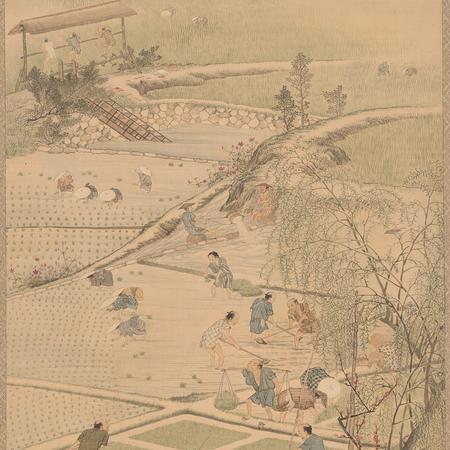GALLERY 2600 | EAST ASIAN ART
 Seasonal celebrations have been a popular subject in Japanese painting since the Heian period (794–1185). Elite cultural practices of Heian court society slowly filtered into the lives of the general populace, and by the Edo period (1615–1868) a popular and highly visual culture of festivals and seasonal observances flourished. The paintings in this gallery reflect both the role these observances played in people’s lives, as well as the importance of the display of paintings in the celebration of seasonal festivals.
Seasonal celebrations have been a popular subject in Japanese painting since the Heian period (794–1185). Elite cultural practices of Heian court society slowly filtered into the lives of the general populace, and by the Edo period (1615–1868) a popular and highly visual culture of festivals and seasonal observances flourished. The paintings in this gallery reflect both the role these observances played in people’s lives, as well as the importance of the display of paintings in the celebration of seasonal festivals.
The artists who produced these paintings worked in a variety of formats suited to temporary display. Hanging scroll format paintings pictorializing auspicious symbols associated with the New Year, for example, would be unrolled and hung in an alcove (tokonoma) for the duration of the festive season only. Large, multi-panel folding-screen format paintings depicting seasonal or celebratory themes could be installed in the household or transported for display during seasonal outings like spring cherry blossom or autumn foliage viewing. The affordability of smaller works, such as fans painted with seasonal motifs, provided artists steady work throughout the year servicing members of early modern Japanese society eager to join in an increasingly shared culture of seasonal observances.
The paintings in this gallery come from the extraordinary collection of Robert S. and Betsy G. Feinberg. Remarkable for the quality and range of its Edo period paintings in particular, the Feinberg Collection has generously been promised to the Harvard Art Museums.


